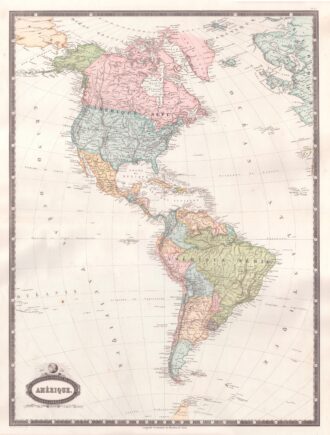decorative map of western and central Mexico covers from Xiamora to Acapulco and includes Mexico City and Guadalajara along with cities, towns, mines, missions and Indian villages. Notations in the mountains north of Mexico City describe the rich deposits of silver and other annotations describe the manners and customs of the Indians. From Coronelli’s Atlante Veneto, one of the most decorative and ornate of all 17th Century Atlases, published in Venice, 1690.
Vincenzo Maria Coronelli (1650-1718) was one of the most influential Italian mapmakers and was known especially for his globes and atlases. The son of a tailor, Vincenzo was apprenticed to a xylographer (a wood block engraver) at a young age. At fifteen he became a novice in a Franciscan monastery. At sixteen he published his first book, the first of 140 publications he would write in his lifetime. The order recognized his intellectual ability and saw him educated in Venice and Rome. He earned a doctorate in theology, but also studied astronomy. By the late 1670s, he was working on geography and was commissioned to create a set of globes for the Duke of Parma. These globes were five feet in diameter. The Parma globes led to Coronelli being named theologian to the Duke and receiving a bigger commission, this one from Louis XIV of France. Coronelli moved to Paris for two years to construct the King’s huge globes, which are 12.5 feet in diameter and weigh 2 tons. The globes for the French King led to a craze for Coronelli’s work and he traveled Europe making globes for the ultra-elite. By 1705, he had returned to Venice. There, he founded the first geographical society, the Accademia Cosmografica degli Argonauti and was named Cosmographer of the Republic of Venice. He died in 1718.
Parte della Nuova Spagna o del Mexico dove sono le Provincie di Guadalaira Xabisco Mecoacan e Mexico
- Year: 1690
- Dimension: 453 x 605 mm
- Place of publication: Venice
€ 500,00










